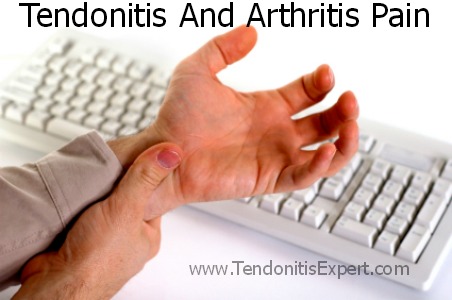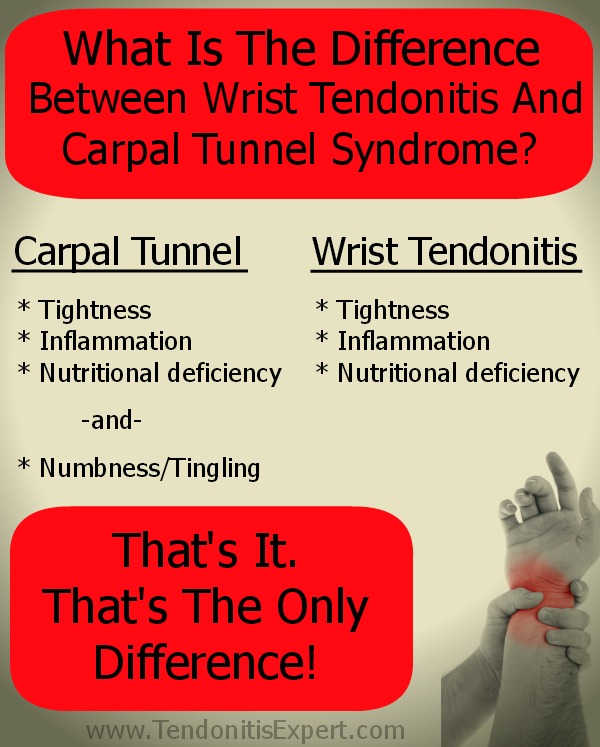Tendonitis And Arthritis
Same Causes Same Fixes
Does Tendonitis cause Arthritis? Yes it certainly can.
Tendonitis and Arthritis go hand in hand, so to speak. The factors involved in the tendonitis dynamic are the SAME factors involved in arthritis.
Want to get rid of osteo arthritis? Then get rid of the factors that caused it to develop in the first place.
- Osteoarthritis is irritation and and/or wear and tear of the inner joint.
- Rheumatoid arthritis is a different animal, as it is a function of a body’s auto-immune response and primarily due to gluten intolerance.
Tendonitis And Arthritis
What Causes Both?
So what is the link between Tendonitis and Arthritis?
Let’s look at the cause of osteo arthritis.
Doctors blame ‘repetitive use’ as the cause of arthritis (just like they blame repetitive use for causing tendonitis, but they never seem to inquire WHY repetitive use causes problems (which explains why they can’t fix either problem).
What Causes Arthritis? Compression of a joint.

A joint is supposed to move freely, synovial fluid creates some ‘float’ and some lubrication for the joint linings rubbing against each other. But when joints are compressed, then the linings of the two different bone surfaces ‘grind’ against each other.
This causes friction, irritation, reduced circulation to the joint lining tissue, wear and tear, rip and tear, scar tissue build up, and eventually, degradation and lessening of joint lining (which results in ‘bone on bone’).
So what causes this joint compression? Two scenarios (that work together so are really the same scenario).
1. Muscles and connective tissue are too tight and thus pull the joint together, or said another way, and thus compressing the joint.
Muscles and tendons ‘cross a joint’. Meaning, a muscle connects on one bone, and it’s tendon crosses a joint to connect to the other bone. When a muscle contracts, it pulls on the tendon and the bone the tendon is connected to, thus creating movement.
Over time, due to the Pain Causing Dynamic, muscles and connective tissue get tight(er) and stay tight(er). This constant, chronic, 24/7 tightness pulls on the tendon and attachment, and put a little put of pull on that other bone, thus pulling one bone into the other, thus creating compression of the joint.
So over months and years there is a little more, and a little more, compression of the joint, thus a little more pressure, a little more grinding, a little less circulation (nutrition to the joint itself), etc. And then you walk or run or type or knit or or or, and the inner joint gets irritated and arthritis develops.
2. Muscles are shock absorbers. When they can’t do their job, they don’t absorb force.
Again, due to the Pain Causing Dynamic, over time, muscles get tight and stay tight. The problem here is that the tighter a muscle gets, the slower it is to respond and the less work it can do (a half squeezed sponge only has 50% squeeze potential left).
So over time, muscles absorb less force (yes, there is force involved when you type, knit, etc)….but all that force has to go somewhere. And often that force translates RIGHT TO THE JOINT.
So again, more grinding, more pressure, less circulation, and more propensity to develop arthritis symptoms.
Tendonitis And Arthritis And Inflammation
A process of inflammation plays a role, of course.
But -why- does inflammation develop?
Because of the two scenarios above, Compression (from tightness) and non-optimal muscle function (from tightness).
You must understand the inflammation process and the Pain Causing Dynamic if you want to understand how and why you have Arthritis.
And if you don’t understand how and why you have tendonitis and arthritis, how can you possibly get rid of it and live pain free again?
When a joint gets irritated an inflammation process kicks in (that's Osteoarthritis).
But it can go the other direction too. Inflammation can cause joint irritation. That's Rheumatoid Arthritis.
Tendonitis is caused by both or either of irritation and inflammation. Multiple factors at play, and any one factor can cause the other factors to get worse.
Osteoarthritis and Rheumatoid Arthritis
What Is Arthritis? That depends on what kind of arthritis you're talking about.
Joint pain from physical issues like tight muscles and joint compression?
Or joint pain from systemic inflammation, auto-immune mechanism, and malnutrition?
What Is Osteoarthritis? Osteoarthritis is when a joint gets inflammed, swollen, and painful (or worse) from chronic tightness and compression.
Every single location of Tendonitis (ankle, knee, toe, hip, wrist, shoulder, neck, etc) can develop arthritis, because a joint and too-tight muscles are involved.
See: What Is Tendonitis?
The tight muscles compress joints. Compressed joints grind on themselves. It's all downhill from there.
What is Rheumatoid Arthritis? Rheumatoid Arthritis is when inflammatory factors in the body (often systemic inflammation) causes pain, swelling, pain (or worse) in one or more joints.
RA, as it's commonely called, is primarily from long term Gluten Intolerance or Gluten Sensitivity, and/or a variety of gut issues leading to Leaky Gut.
Can you have Osteoarthritis -and- Rheumatoid Arthritis?
Of course you can.
You can have Rheumatoid Arthritis –and- regular arthritis. The body responds predictibly to any particular stimulus. doesn’t make things any more complicated to fix, it just means you have to effectively deal with the CAUSES of each type of Arthritis. There’s a bit of a learning curve, but overall it’s pretty simple.
Tendonitis and Arthritis (of either type) are not high-tech issues. The basic principles of the cause or simple and predictible. It's just a matter of doing the RIGHT self care.
See: Osteoarthritis vs. Rheumatoid Arthritis
Return to the top of this Tendonitis and Arthritis page.
Go to the www.TendonitisExpert.com homepage.

